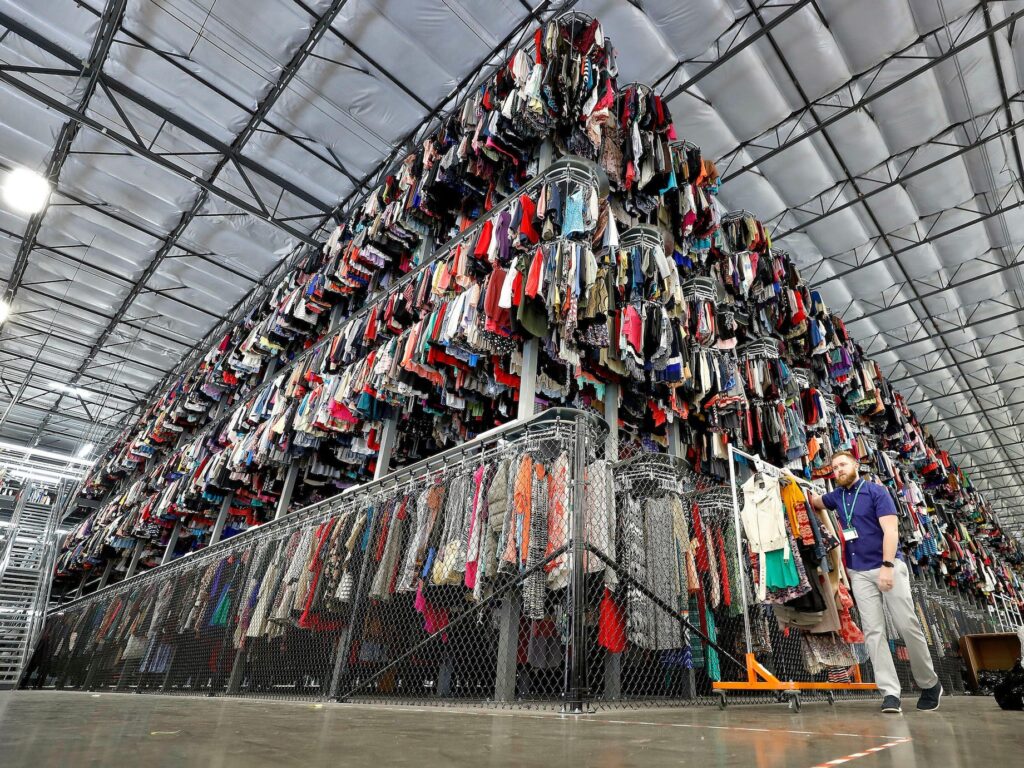- ThredUp’s Fashion Footprint calculator tallies the climate impact of the clothes we buy.
- My annual impact was the equivalent of driving 614 miles in a gas-powered car.
- Buying secondhand, avoiding online returns, and machine washing on cold are better for the planet.
- This article is part of Insider’s weekly newsletter on sustainability. Sign up here.
Scrolling through Instagram or TikTok stories means getting inundated with pretty women trying to sell you something — typically fast fashion. I’ve been sucked into the latest trends more often than I’d like to admit.
A cozy sweater, colorful printed pants, or cute shoes tend to be my weaknesses.
Turns out, the climate impact of my annual shopping habits is still 65% lower than the average customer, at least according to ThredUp’s new Fashion Footprint calculator. The online reseller launched the tool this week to help people identify ways to shrink their impact, such as by buying secondhand, reselling unwanted clothes, avoiding returning online purchases, and machine washing on cold.
“This was really born out of a lot of feedback from ThredUp shoppers who said they wanted to understand this better and to break their fast-fashion addictions,” Anthony Marino, ThredUp’s president, told Insider.
The fashion industry has an overproduction problem, making more than 100 billion garments each year, or about 12 times the global population. Making all that cotton and leather, plus polyester and fake leather — which are mainly plastic — uses a lot of energy, water, and chemicals. Globally, the industry accounts for 4% of greenhouse-gas emissions.
Buying used clothes is an easy way to reduce those impacts, and customers are slowly catching on. Resale captured 9% of the US apparel market in 2022, compared with 3% a decade ago, according to ThredUp's latest annual report. Americans bought 1.4 billion pieces of secondhand apparel last year that they normally would have bought new, a 40% jump over 2021.
Millennials and Gen Z shoppers are driving the growth, especially online. A December survey conducted by GlobalData, the research firm that prepared ThredUp's report, found that Gen Z said two in five items in their closets were secondhand.
That sounds high, considering the rapid rise of fast-fashion companies like Shein and Pretty Little Thing. Plus, people aren't always truthful in surveys.
Marino acknowledged that could be the case, because in surveys, young shoppers say they feel pressure from social media to buy the latest trends and have a different outfit every day. Fast fashion serves up cheap goods at that speed. Yet the same shoppers say they want to break the habit because the clothing generally doesn't last long and harms the environment.
"They want an alternative," Marino added. "That's a call to action for ThredUp and other retailers."
Full transparency from this millennial: My wardrobe is probably 90% new, 10% used. I plugged that into ThredUp's calculator. I buy about a dozen pieces a year, mainly in-store. (The calculator doesn't account for shoes. Oh, the shoes.)
I clean out my closet once a year and donate what I no longer want to ThredUp or Goodwill. ThredUp said it sells at least 63% of what it lists online, while the rest is either reused or recycled through a vetted network of thrift stores, domestic sorters, and international brokers. I do three loads of laundry a month on cold and machine dry them.
Those habits added up to the equivalent of 563 pounds of carbon-dioxide emissions annually, or a little more than a one-way drive from my apartment in Washington, DC, to my hometown in northern Vermont in a gas-powered car.
